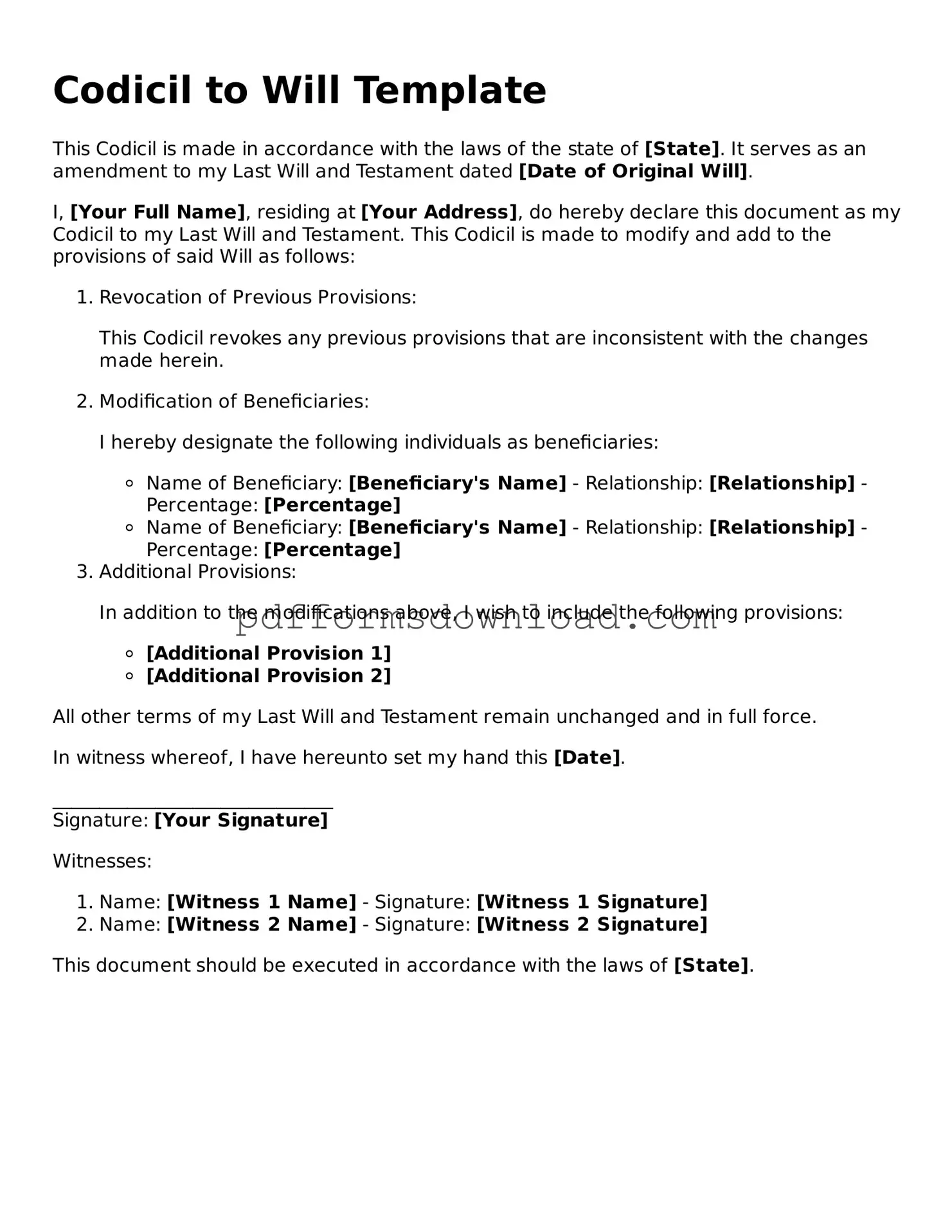What is a codicil to a will?
A codicil is a legal document that allows you to make changes to an existing will. It can add new provisions, modify existing ones, or even revoke certain parts of the will. Essentially, it serves as an amendment, ensuring that your wishes are accurately reflected without the need to create an entirely new will.
When should I use a codicil instead of a new will?
You might choose to use a codicil when you want to make minor changes to your will, such as updating beneficiaries or altering specific bequests. If the changes are significant or if your circumstances have changed dramatically, creating a new will might be a better option. Always consider the clarity and intent of your documents when making this decision.
How do I create a codicil?
To create a codicil, you should start by clearly identifying your original will. Include the date of the will and specify that the document is a codicil. Then, outline the changes you wish to make. It's crucial to sign and date the codicil in accordance with your state’s requirements, which often include having witnesses or notarization.
Does a codicil need to be notarized?
Whether a codicil needs to be notarized depends on state law. Some states require notarization for the codicil to be valid, while others may only require witnesses. It's important to check the specific requirements in your state to ensure your codicil is legally binding.
Can I revoke a codicil?
Yes, you can revoke a codicil. You can do this by creating a new codicil that explicitly states the revocation or by physically destroying the codicil. If you revoke a codicil, make sure that your original will remains intact and valid unless you intend to change it as well.
What happens if my original will and codicil conflict?
If there is a conflict between your original will and a codicil, the codicil generally takes precedence. The intent behind the codicil is to clarify or change specific aspects of the will. However, it’s important to ensure that the language in both documents is clear to avoid confusion during probate.
Can I include multiple changes in one codicil?
Yes, you can include multiple changes in a single codicil. Just be sure to clearly outline each change and how it affects the original will. This can help streamline the process and keep your estate planning organized.
Is it necessary to inform my executor about the codicil?
While it's not legally required, it is highly advisable to inform your executor about any codicils you create. Keeping them in the loop can help avoid confusion and ensure that your wishes are carried out as intended. Consider providing them with copies of both the original will and any codicils.
Where should I keep my codicil?
Store your codicil in a safe place, just like your original will. This could be a safe deposit box, a fireproof safe at home, or with your attorney. Make sure that your executor and trusted family members know where to find it. Accessibility is key to ensuring your wishes are honored.
